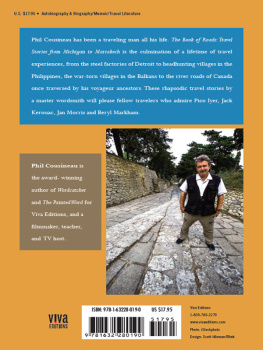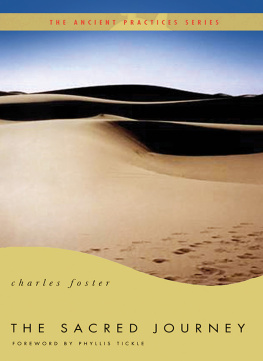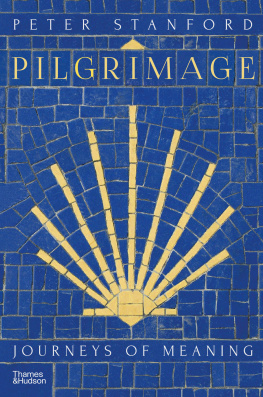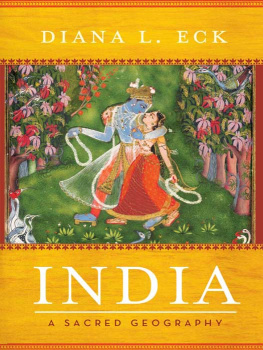ABOUT THE AUTHOR
P HIL COUSINEAU WAS BORN IN 1952 at the Fort Jackson army hospital in Columbia, South Carolina and grew up in Wayne, Michigan. While moonlighting in an automotive parts factory, he studied journalism at the University of Detroit. His peripatetic career has included sports writing, playing basketball in Europe, harvesting date trees on an Israeli kibbutz, painting forty-four Victorian houses in San Francisco, and leading adventure travel tours around the world.
Cousineau is an author, editor, photographer, tour leader, teacher, and documentary filmmaker. His lifelong fascination with art, literature, and the history of culture has taken him on journeys around the world. He lectures frequently on a wide range of topics including: mythology, movies, environmental design, community work, creativity, mentorship, and soul.
He is the author of several books including Wordcatcher: An Odyssey into the World of Weird and Wonderful Words; Stoking the Creative Fires: 9 Ways to Rekindle Passion and Imagination; Once and Future Myths: The Power of Ancient Stories in Modern Times; The Hero's Journey: Joseph Campbell on His Life and Work; The Soul Aflame: A Modern Book of Hours; and The Way Things Are: Conversations with Huston Smith on the Spiritual Life. He has also authored two books of poetry, Night Train and The Blue Museum, and has contributed to dozens of other books including John Densmore's Riders on the Storm: My Life With Jim Morrison and the Doors.
Cousineau's screenwriting credits in documentary films, which have won more than twenty-five international awards, include Ecological Design: Inventing the Future; The Peyote Road; The Red Road to Sobriety; Your Humble Serpent: The Life of Reuben Snake; Wiping the Tears of Seven Generations; Eritrea: March to Freedom; The Presence of the Goddess; The Hero's Journey: The World of Joseph Campbell; and the 1991 Academy Award-nominated Forever Activists: Stories from the Abraham Lincoln Brigade.
Cousineau currently hosts the PBS show Global Spirit, an internal travel television series. He lives in the North Beach neighborhood of San Francisco, California. Visit him online at www.philcousineau.net.
For more information on Phil Cousineau's art and literary tours and organized pilgrimages, please contact:
Sisyphus Travels
P. O. Box 330098
San Francisco, CA 94133
Conari Press, an imprint of Red Wheel/Weiser,
publishes books on topics ranging from spirituality,
personal growth, and relationships to women's issues, parenting,
and social issues. Our mission is to publish quality books
that will make a difference in people's liveshow we feel
about ourselves and how we relate to one another.
We value integrity, compassion, and receptivity,
both in the books we publish and in the way
we do business.
Our readers are our most important resource, and we value
your input, suggestions, and ideas about what you
would like to see published. Please feel free to contact us,
to request our latest book catalog, or to be added to our
mailing list.
Conari Press
an imprint of Red Wheel/Weiser, LLC
665 Third Street, Suite 400
San Francisco, CA 94107
www.redwheelweiser.com
I
THE LONGING
For in their hearts doth Nature stir them so, Then people long on pilgrimage to go, And palmers to be seeking foreign strands, To distant shrines renowned in sundry lands.
Geoffrey Chaucer,
The Canterbury Tales
I N FEBRUARY 1996, TOGETHER WITH MY BROTHER PAUL, I took the long boat ride up the Mekong River in Cambodia to see one of the great riddles of the ancient world, the sacred sprawl of ruined temples and palaces that a twelfth-century traveler said housed numerous marvels.
On our first morning at the walled city of Angkor Wat, we witnessed a glorious sunrise over its lotus-crowned towers, then began the ritual walk up the long bridgeway toward the sanctuary. Our arms were draped across each other's shoulders. Our heads shook at the impossibly beautiful sight of the marvelous enigma that early European chroniclers regarded as one of the Wonders of the World, and later colonialists described as rivaling the divinely inspired architecture of Solomon.
We walked as if in a fever-dream. Halfway down the causeway, we paused to take in the beauty of the shifting light. We snapped a few photographs of the nagas, the five-headed stone serpents, that undulated along the moat and of the chiseled lacework in the colossal gateway looming before us, then grinned at each other and took a deep breath of the morning air. At that moment, we noticed a gray-robed Buddhist nun limping by us on her way to the temple. Her head was shaved and bronzed. When she drew even with us, I held out an offering, which she calmly accepted with stumps where once had been hands. Stunned, I then realized why she had been walking as if on stilts. Her feet had been severed at the ankle and she was hobbling on the knobs of her ankles. I was stricken with images of her mutilation by the demonic Khmer Rouge, then wondered if she'd been a victim of one of the 11 million landmines forgotten in the forests, fields, and roads of Cambodia.
Her eyes met mine with a gaze of almost surreal serenity. Utterly moved, we offered a few dollars for the shrine in the temple. She calmly accepted the donation in a small woven bag, bowed, and limped away, like a thin-legged crane moving stiffly through the mud of one of the nearby ponds.

A Buddhist nun sits next to the lacework reliefs of the Bayon temple at Angkor Thom, selling incense and candles to pilgrims who have come to pray.
The encounter with the Cambodian nun was an ominous way to begin our visit, a gift briefly disguised as a disturbance. Her enigmatic smile eerily anticipated the expression on the sculptured faces of the fifty-four giant bodhisattvas that loomed in the Holy of Holies above the nearby pyramid temples of the Bayon. Each time I met their timeless gaze, my heart leapt. As the lotus ponds and pools throughout the complex were created to reflect each work of religious art, the faces of the bodhisattvas and the nun mirrored each other. I began to think of the nun as the embodiment of the Bodhisattva Avalokiteshvara, the god of inexhaustible compassion, who has come to symbolize the miracle of Angkor for millions of pilgrims.
How far does your forgiveness reach? the sculpted faces ask from a thousand statues.
As far as prayers allow, the nun's eyes seemed to respond.
I rambled through the ruins with my brother for the next several hours, stunned by our sheer good fortune of being there. The Angkor complex was destroyed in the fifteenth century, then forgotten for 400 years and overrun with the stone-strangling vines of the jungle. Marveling at the beauty laced with terror in the stories of our young Cambodian guide (who told us the local villagers believed that Angkor was built by angels and giants), time seemed poised on the still-point of the world. This was more than an architectural curiosity, a pious parable of fleeting glory; it was a microcosm of the universe itself. According to scholars, the walls, moats, and soaring terraces represented the different levels of existence itself. The five towers of Angkor symbolized the five peaks of Mount Meru, the center of the world in Hindu cosmology. This was the world mountain in stone, a monumental mandala encompassed by moats that evoked the oceans. A visit was an accomplishment demanding the rigorous climbing of precipitously steep staircases, built that way not without reason.
Next page










